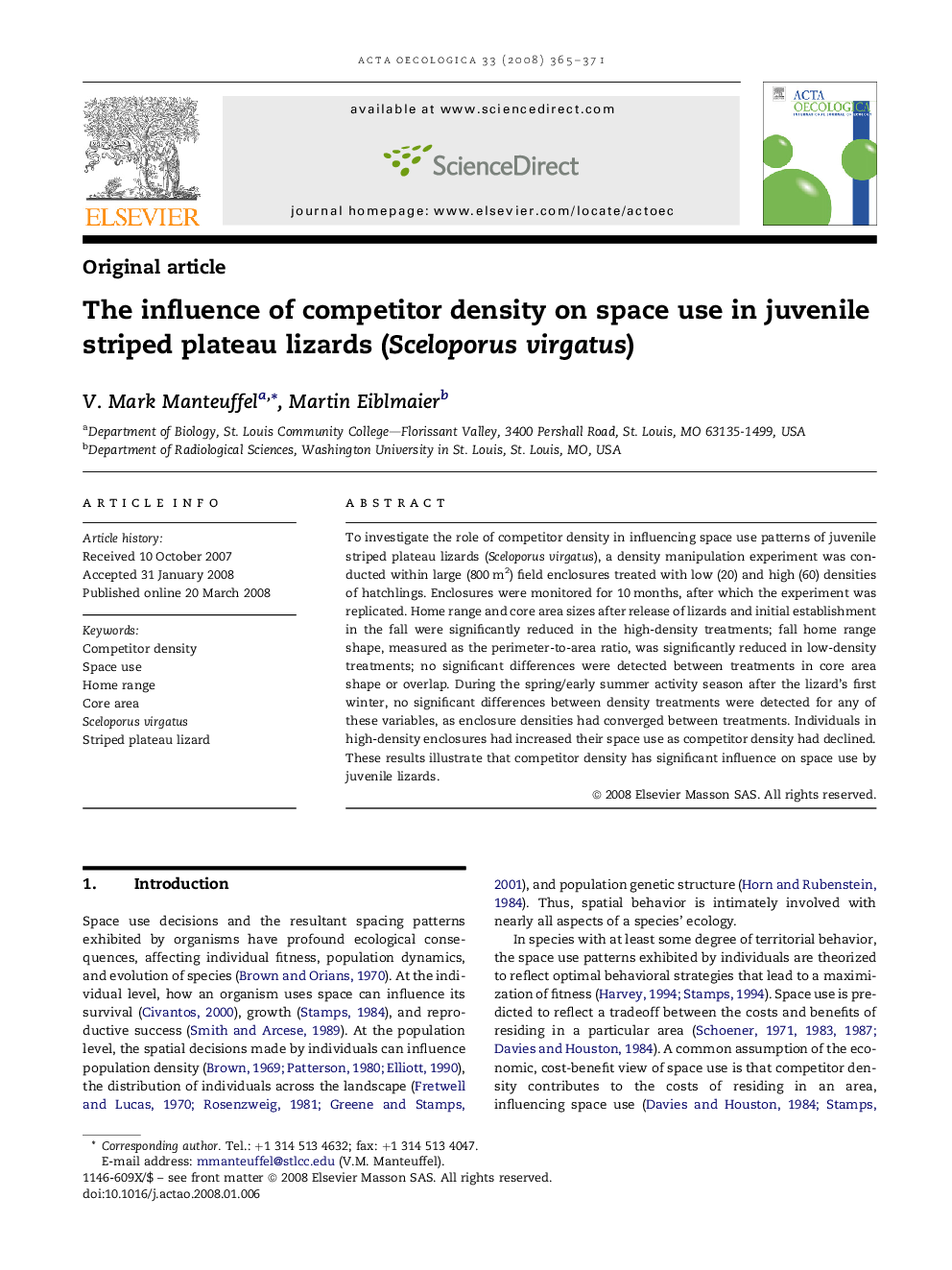| Article ID | Journal | Published Year | Pages | File Type |
|---|---|---|---|---|
| 4381557 | Acta Oecologica | 2008 | 7 Pages |
Abstract
To investigate the role of competitor density in influencing space use patterns of juvenile striped plateau lizards (Sceloporus virgatus), a density manipulation experiment was conducted within large (800Â m2) field enclosures treated with low (20) and high (60) densities of hatchlings. Enclosures were monitored for 10Â months, after which the experiment was replicated. Home range and core area sizes after release of lizards and initial establishment in the fall were significantly reduced in the high-density treatments; fall home range shape, measured as the perimeter-to-area ratio, was significantly reduced in low-density treatments; no significant differences were detected between treatments in core area shape or overlap. During the spring/early summer activity season after the lizard's first winter, no significant differences between density treatments were detected for any of these variables, as enclosure densities had converged between treatments. Individuals in high-density enclosures had increased their space use as competitor density had declined. These results illustrate that competitor density has significant influence on space use by juvenile lizards.
Keywords
Related Topics
Life Sciences
Agricultural and Biological Sciences
Ecology, Evolution, Behavior and Systematics
Authors
V. Mark Manteuffel, Martin Eiblmaier,
